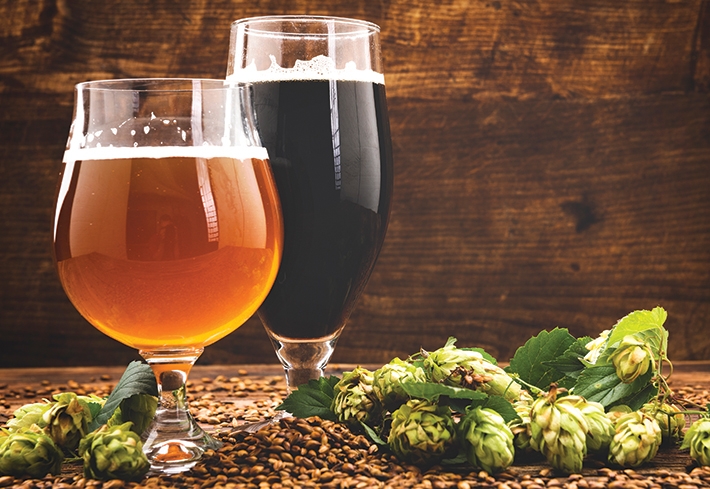
How the committee on sensory evaluation (E18) is using cutting-edge science to refine the way we select and train sensory assessors.
By JP Ervin
Dec 26, 2023
Agatha Christie’s famed detective Hercule Poirot was noted for his sharp powers of observation, something that also contributed to his discriminating sense of taste. A passionate aesthete, Poirot scoffed at poorly crafted meals, searched out delicate European pastries, and casually sipped Sirop de cassis – his beloved drink of diluted blackcurrant syrup soda.
Through the course of his adventures, Poirot encountered naïve tasters who had fallen victim to laced daiquiris and poisoned chocolates. It became clear that more than just a matter of taste, Poirot’s snooty perspective was tied to his ability to dodge threats and crack the case.
Modern sensory science also requires a discerning palate, but Poirot’s attitude might rule him out as a sensory assessor. In the course of their work, trained assessors are asked to consume stale products, detect notes of contamination, and drink glasses of heavy cream to master the mouthfeel of beverages. They are often taught to use scientific language to describe experiences, a level of precision that would even make Poirot blush.
ASTM International’s committee on sensory evaluation (E18) oversees standards related to the training and use of sensory assessors on panels. In recent and ongoing projects, they are working to sharpen how scientists approach this research.
Sensory Assessors
Sensory evaluation evokes, measures, analyzes, and interprets reactions to stimuli perceived through the senses. The field is closely associated with the food industry, where our sense of taste is one of the main motivators and criteria for our experiences. However, sensory science has been applied to the quality of beer, the flavor of toothpaste, the smell of deodorant, the tactile sensations of bedsheets, and even the crinkling sound made by a bag of chips.
Companies turn to sensory evaluation for many reasons. One is quality assurance (QA), using assessors to locate inconsistencies from one batch to another. A second core function of sensory evaluation is research and development (R&D), where sensors can help create or modify a recipe, for instance, when changing an ingredient supplier or switching a sweetener without compromising taste qualities.
Many people associate sensory evaluation with groups of consumers who are asked to engage with a product. However, the field also makes use of trained assessors on panels. Each group serves a specific purpose.
READ MORE: A Day in the Life of a Professional Beer Taster
“With consumers, we are reacting to the information they give us,” explains Lisa Beck, founder of Insight Factory and E18 member. “We hope that we’re asking the right questions. I try to understand motivations, how they’re perceiving things, how they’re using things. Everybody is a little different. And that’s sometimes the fun part of the job – there is variability in the feedback we get back.”
In contrast, trained panelists develop their sensory acuity and the language they use to talk about products. These assessors often go through rigorous training, which develops their sensory abilities and their ability to isolate distinctive taste elements.
According to Ali Schultz, sensory manager for New Belgium Brewing Company and committee member, assessors are “taught to recognize and scale specific attributes of a product, whether that be food, cars, lotions, or body-care products. They are taught to be as much like a machine as possible, but using the human senses, which are often more sensitive and holistic than an instrument.”
Identifying and training assessors is a complex process, and committee members like Beck and Schultz develop standards that build on past discoveries in the field. Beck collaborated with Terese Tamminen on a forthcoming revision of ASTM’s 1981 Guidelines for the Selection and Training of Sensory Panel Members, an important text in the field of sensory evaluation. Meanwhile, Schultz headed up the revision of the standard guide for sensory evaluation of beverages containing alcohol (E1879), completed in 2022 with Tess Aldredge.
Sharpening the Senses
Work with assessors begins by identifying and developing their skillset. Beck explains that the primary consideration is an assessor’s “sensory acuity.”
“Say I have a product and there’s sweetener in it,” Beck says. “I want to make sure that the panelists on my panel perceive sweetness very well and can identify even small differences. We give them a battery of different sweetness levels, as well as salty and the like, just to make sure they perceive basic tastes. Sometimes when people are very product- or category-specific, panelists will be trained on specifics relevant to those products to make sure they’re performing and picking up the things that need to be picked up.”
It might be tempting to think that people are born with good or bad senses of taste, but Schultz explains that some people simply need training. “We give them a year of attribute training,” she says. “Our screening process takes a lot longer. Some people say they are bad at smelling, but we all are. As a human, you can smell well, but it’s hard to put words to what you’re smelling. That’s the struggle with sensory science, because we don’t talk about it in our daily lives. A lot of it is shifting the mindset of panelists.”
FOR YOU: How Mobile Legged Robots Are Becoming A Reality
Schultz adds that this process means decentering customary ways of thinking about and describing sensations. Drawing on her experiences as a sensory expert in the beer industry, Schultz says that precision is key.
“You sometimes read on the side of beer ‘pillowy flavor,’” Schultz says. “We would never use that word in sensory science. Instead, we make panelists learn chemical names. For example, isoamyl acetate is a specific compound that smells like candy banana. We train our panelists to say isoamyl acetate instead of banana. A banana can smell like a lot of different things. It can smell green all the way up to that disgusting brown sludgy thing. We are very insistent on the language they use and if there’s confusion, we dive into that, break it apart, and give them chemicals or references. I make panelists drink heavy cream for mouthfeel attributes. They’re unfazed by whatever we give them anymore because it’s always weird.”
Rethinking Assessors
Schultz’s professional experiences led to her interest in revising E1879, which she felt needed to balance concerns about safe consumption of alcohol with how to conduct rigorous sensory panels. The standard emphasizes many safety considerations, including complying with local regulations and using designated drivers for safe transport after tests. It also provides insights about sensory studies, including recommending precise serving temperatures for specific beverages and even how to pour a drink to ensure uniform foam development and release of gasses.
Beck’s forthcoming manual also addresses fresh concerns. The revision addresses ways to respond to panelist dynamics, integrate new members into an existing panel, and retain or dismiss panelists. It also will address the creation of short-term episodic panels, as well as many aspects of QA. “This was a difficult task,” Beck says. “The previous manual was a longstanding classic.”
She adds that growth and self-evaluation are important aspects of sensory evaluation. “Science is constantly evolving and we’re always looking for new things. Consumers are evolving. Things have become more computerized, and people are handling the data in that way. These things have forced some change. Regulatory environments have forced changes. But like any science, it’s constantly evolving. It’s a fascinating field because there’s always something new.”
January / February 2024


